Harbour Monthly Commentary: Finding value in corporate bonds
Corporate bonds are unlikely to repeat their strong performance from 2012 but value can still be found if investors know where to look and what risks to watch out for.
Thursday, March 7th 2013, 10:17AM
by Harbour Asset Management
• Corporate bond markets performed strongly over the second half of 2012, both in New Zealand and offshore. Attractive valuations, an improving macroeconomic environment, policy actions that reduced risks to investors and a search for yield combined to create a very supportive mix of conditions.
• With credit spreads now at the lowest level since the early days of the GFC, some commentators are asking whether credit markets are overheating and ripe for a correction.
• Our view is that credit spreads have shifted from “attractive” to “satisfactory.” This downgrade isn’t motivating a large reduction in overall credit exposure, but we are seeing reasons to be more cautious about the long-duration, lower-rated and reset sectors.
A stellar performance from credit in 2012
Investors in credit in 2012 benefited from a strong recovery in credit markets.
In late 2011, with the capital market for new debt effectively closed in Europe, the European Central Bank (ECB) introduced unlimited LTROs, a format for banks to access sufficient funding. This, combined with Mario Draghi’s mid-year commitment to “do whatever it takes”, which was directed at European sovereign markets, also went a long way towards easing stress in credit markets.
With quantitative easing also adding to liquidity, the cash available to go into risky assets was abundant and ultimately very willing. Credit markets therefore started the year with spreads to government yields at wide levels and progressively tightened throughout the year. By December, performance had been strong across the global credit universe, including global high yield, emerging markets and also New Zealand. New Zealand credit spreads reached the tightest levels seen since the early stages of the GFC (Chart 1).
As the old market adage goes, ‘a rising tide lifts all ships.’ Improving conditions enabled the riskiest credit sectors in New Zealand to perform the best in 2012. Using NZFMA data, we estimate that the average credit spread to swaps on Financials fell from 175 basis points to 100 basis points; whereas spreads on Local Authorities fell from 100 basis points to 75 basis points. Several low-ranking perpetual bonds provided equity-like returns.
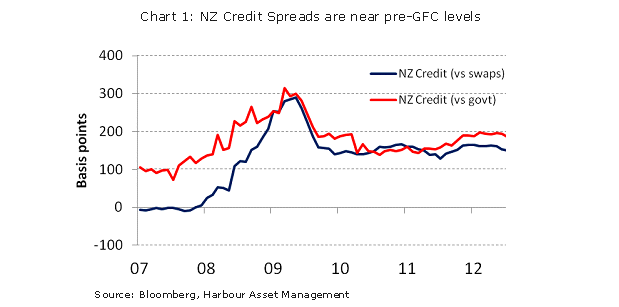
Has the market gone too far?
With credit spreads now lower and the long-term bull market in government bonds looking to be nearly exhausted, the question many are asking is, ‘Can corporate bonds continue to perform?’ There are signs that investors are less keen than they were through 2012.
In the US, fund flows into investment grade bonds have recently stalled, although appetite for high yield and emerging market funds remain positive. The apparent inconsistency here might suggest that investors are more concerned about interest rate risk than credit risk. Another explanation could be that investors are just craving income and focussing on the highest yield part of the market. In New Zealand, we are seeing both of these themes. In addition, term deposits are another consideration for retail investors.
Chart 2 & 3: Funds flow following returns in US Investment Grade credit
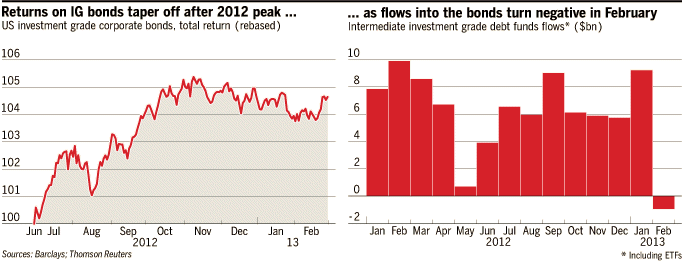
As always in any investment decision, there are a number of factors to consider. The major ones fall into the following categories:-
Macroeconomic environment: Economic performance is quite widely dispersed at present. While the US and China have shown clear signs of improvement, Japan and Australia are flat and Europe (including the UK) is still very weak. However the key change for credit markets over recent months has been that the two focal points of risk have been alleviated, even if only on a temporary basis. To date it has been sufficient to see policy measures that address the immediate stresses and reverse the downward spiral that caused so much alarm in 2012. At present, momentum appears to be building in the US, with growing credit demand and greater willingness to lend from the banks providing a clear sign that conditions have improved. This momentum will be critical if the US economy is to overcome the negative impacts of fiscal constraint as compulsory spending cuts (sequestration) kick in.
The New Zealand economy is also rather mixed, although the broad picture is of improvement. Demand for housing and the prospects for construction in Canterbury and Auckland are well understood and tangible. Other areas are less robust, with the drought conditions adding some uncertainty to the agricultural sector. Government spending continues to be constrained.
Valuation: Our current valuation status of ‘satisfactory’ means that we believe we are being adequately rewarded for the risks taken. This would argue for a close to neutral exposure, as opposed to the overweight we have held over the last several months. We think we would need to see further improvement in the global economic environment to allow credit to move into expensive territory.
Yield Curve: With the yield curve positively shaped, there are mathematical incentives to be invested in credit, as the yield pick-up for longer-dated securities is a big component for expected returns. We expect bond yields to gradually drift higher over the next 12-24 months. This steers us towards preferring 2-5 year credit, rather than 5-10 year maturities.
Supply and Demand: Supply of new corporate bonds has been fairly modest, with some NZ corporates and most of the banks now well funded. Retail investors have faced a greater challenge, as a significant proportion of deals are being sold only to institutional investors. This situation looks likely to continue. Given the considerable appetite for income and frustration with low deposit rates, we expect demand to outweigh supply for the foreseeable future. We do anticipate ongoing issuance from the NZ Local Government Funding Authority, as councils continue to increase debt levels, but the low yields available do not meet the targets sought by most investors.
Risks: The GFC and its’ aftermath have given investors a greater appreciation of risks. While the immediate threat of financial instability such as seen in 2011/12 has passed, medium term risks still persist. Our concern centres around the by-products of the policy initiatives introduced to address the GFC. The fiscal deficits and massive build up in debt/GDP levels remain an unresolved challenge. In 2012 the focus was mainly on Greece, Italy and Spain, with the US fiscal cliff an issue at the end of the year. However the challenge is shared by many countries. The market is hoping that government austerity programs do not derail growth. While there is scope for adjustments as time goes by, a remarkable balancing act is required to orchestrate a growth path that enables economies to work their way into a sounder position. Given the difficulties of achieving political consensus to make swift and wise decisions, it seems almost inevitable that some sort of stress will re-appear at some stage.
Similarly, NZ-specific risks appear to be of a medium-term nature and are mostly intertwined with global issues. Standard & Poor’s recently reminded us that the local housing market looked a potential source of risk, although this does not appear an imminent challenge.
Implications for NZ fixed interest
When we bring all of the above issues together we see some key investment implications. The ‘satisfactory-only’ valuations, combined with recognised risks, make it hard to justify an overweight credit position, even though the yield attraction exists and risks do not appear to be immediate. We also think the idea of a ‘rising tide lifting all ships’ shouldn’t be extrapolated. That implies that sectoral and issuer-specific dynamics become more important. Consequently, we are looking to reduce the riskier elements of the portfolio (remembering that this has been the strongest area of performance). This includes long-dated credit, lower-rated securities and reset (perpetual) securities.
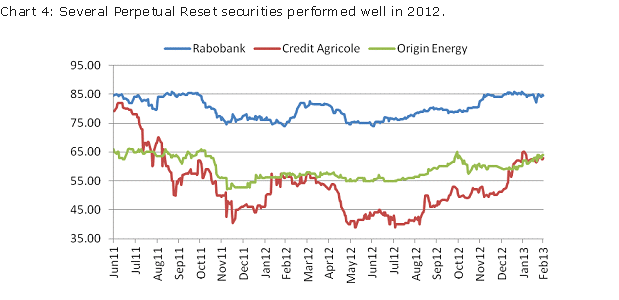
However we are a long way from considering a highly defensive position. The yield attraction and inherent stability of short to medium dated high quality bonds remains. We expect returns to exceed government bonds and, where duration is short, exposure to rising interest rates is minimised.
From a sectoral perspective, we prefer utilities and higher-rated corporates. In most cases, balance sheets are in good shape and as supply is limited, demand is robust. We are mindful that the latest earnings round of listed companies was characterised by better cost management than by growth in underlying earnings. Globally, acquisition activity has picked up, so the credit sector is not without some risk. That is why security selection will be important. At present the financial sector continues to benefit from the fact that many banks pre-funded through 2012 and don’t need to issue aggressively in 2013.
However any re-emergence of global stress would probably be felt in this sector. Local authority stock is trading at tight spreads, especially LGFA debt. It is favoured by banks, which have a need to hold liquid, high quality assets as part of their liquidity management operations with the Reserve Bank. We see limited scope for outperformance from this area.
In conclusion, there are still some attractive opportunities in the corporate bond market, but with spreads narrower and global imbalances not yet resolved, there are grounds for reducing riskier exposures and a sharpened focus on sectoral and issuer-specific risks.
Mark Brown
Director, Head of Fixed Income Portfolio Management,
Harbour Asset Management
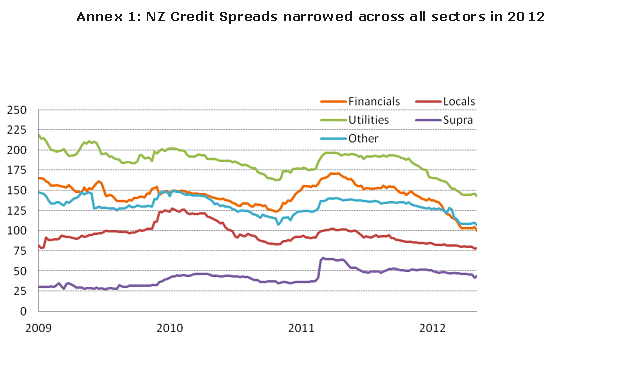
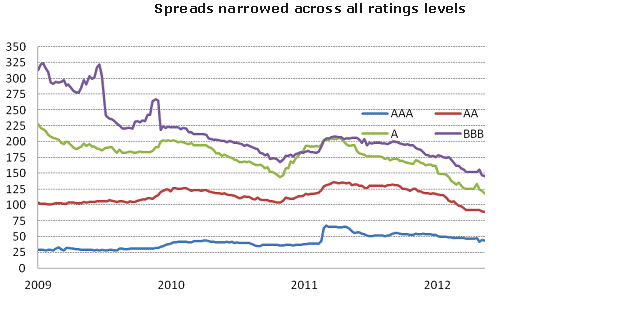
Important disclaimer information
| « Pathfinder Monthly Commentary: don't hedge currency - ever! | Hamish Douglass Unplugged - Latest Video from Adviser Briefing - August 2012 » |
Special Offers
Comments from our readers
No comments yet
Sign In to add your comment
| Printable version | Email to a friend |









